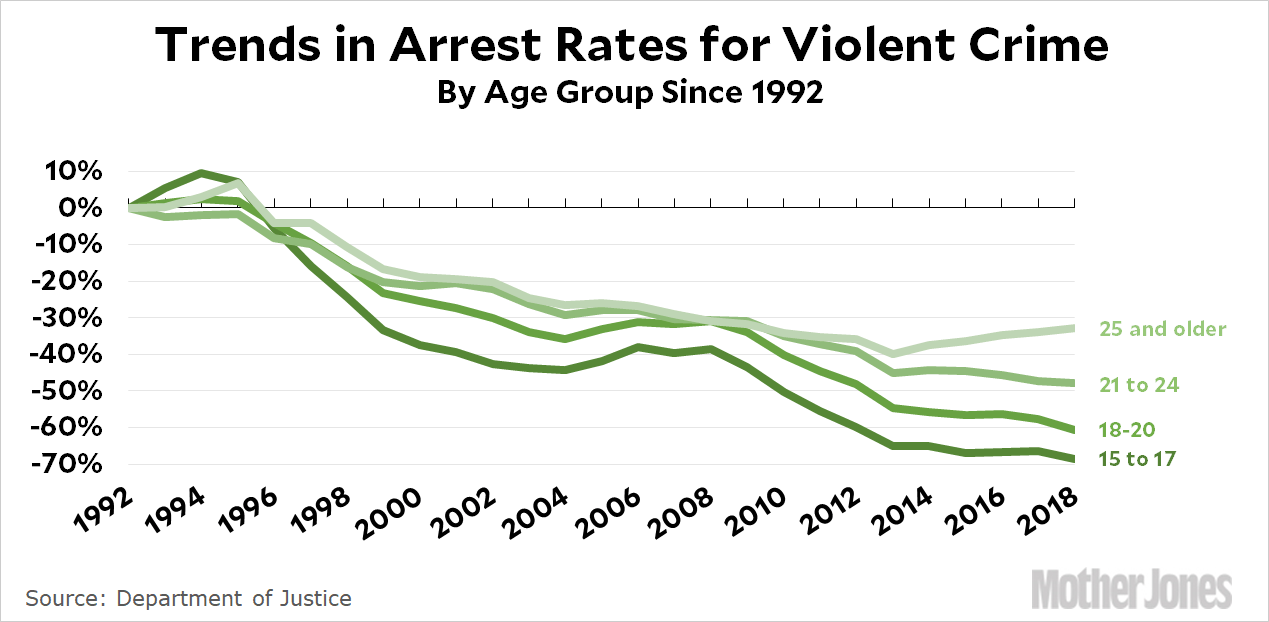As we debate the defunding/reimagining/reforming of our police forces, it’s worth taking a look at what the world looks like today compared to the way it still seems to look to many police officers. Here are the trends in arrest rates among young offenders since the crime peak of 1992:

Among the highest crime age groups of 15-17 and 18-20, arrest rates are down by about two-thirds. Two-thirds! I wonder how many people have truly internalized this? Cops still seem to think of themselves as a thin blue line protecting a society under siege from threatening hordes of criminals. But this isn’t true. Young people today are simply not as dangerous as they used to be, thanks to a childhood mostly free of lead poisoning.
This is a permanent change and it’s true of everybody: men and women; Black, white, and Latino; urban and rural. We just flatly don’t live in a society that’s anywhere near as dangerous as it used to be. When will policing change to recognize this?
















